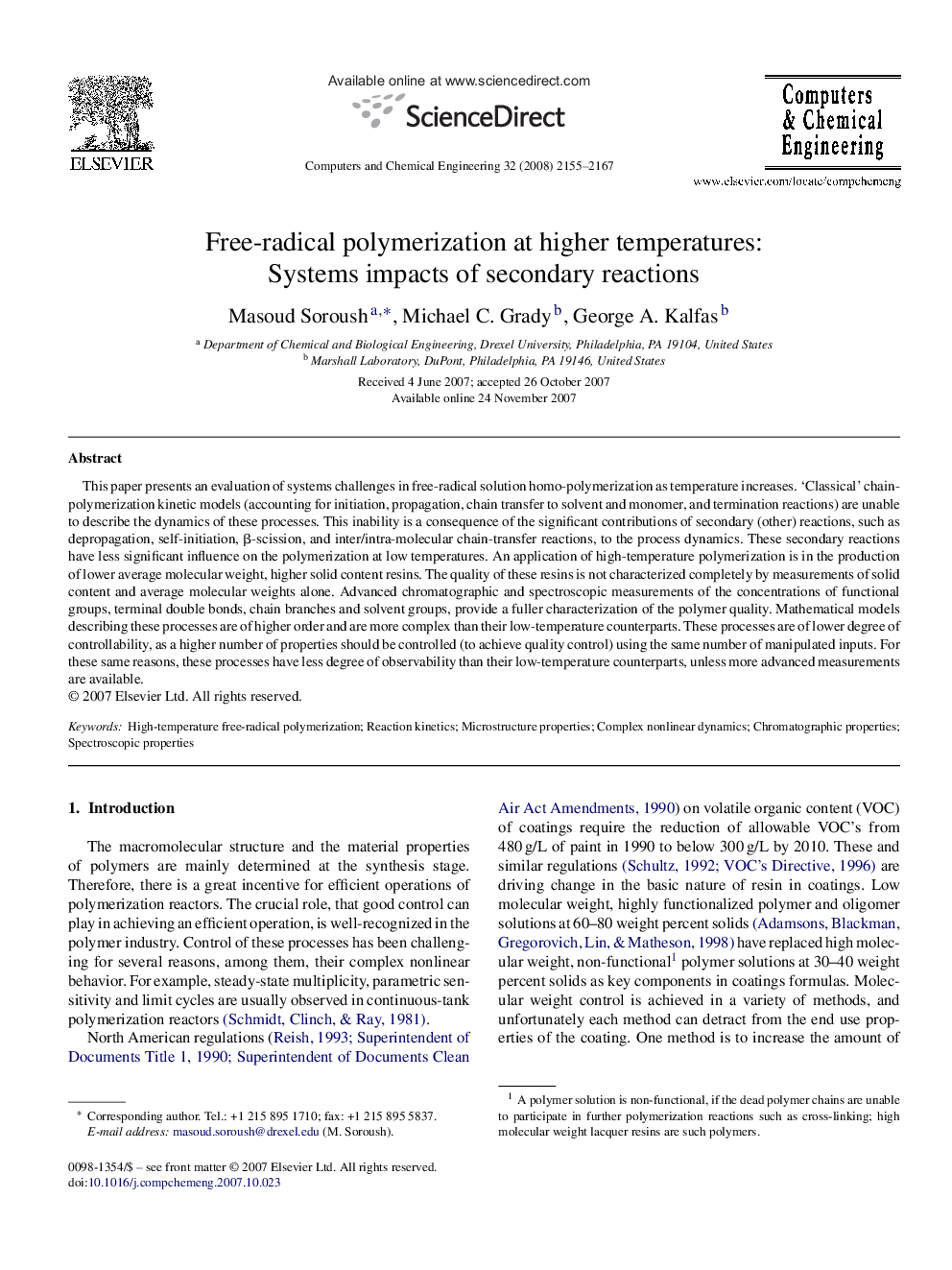| Article ID | Journal | Published Year | Pages | File Type |
|---|---|---|---|---|
| 173798 | Computers & Chemical Engineering | 2008 | 13 Pages |
This paper presents an evaluation of systems challenges in free-radical solution homo-polymerization as temperature increases. ‘Classical’ chain-polymerization kinetic models (accounting for initiation, propagation, chain transfer to solvent and monomer, and termination reactions) are unable to describe the dynamics of these processes. This inability is a consequence of the significant contributions of secondary (other) reactions, such as depropagation, self-initiation, β-scission, and inter/intra-molecular chain-transfer reactions, to the process dynamics. These secondary reactions have less significant influence on the polymerization at low temperatures. An application of high-temperature polymerization is in the production of lower average molecular weight, higher solid content resins. The quality of these resins is not characterized completely by measurements of solid content and average molecular weights alone. Advanced chromatographic and spectroscopic measurements of the concentrations of functional groups, terminal double bonds, chain branches and solvent groups, provide a fuller characterization of the polymer quality. Mathematical models describing these processes are of higher order and are more complex than their low-temperature counterparts. These processes are of lower degree of controllability, as a higher number of properties should be controlled (to achieve quality control) using the same number of manipulated inputs. For these same reasons, these processes have less degree of observability than their low-temperature counterparts, unless more advanced measurements are available.
